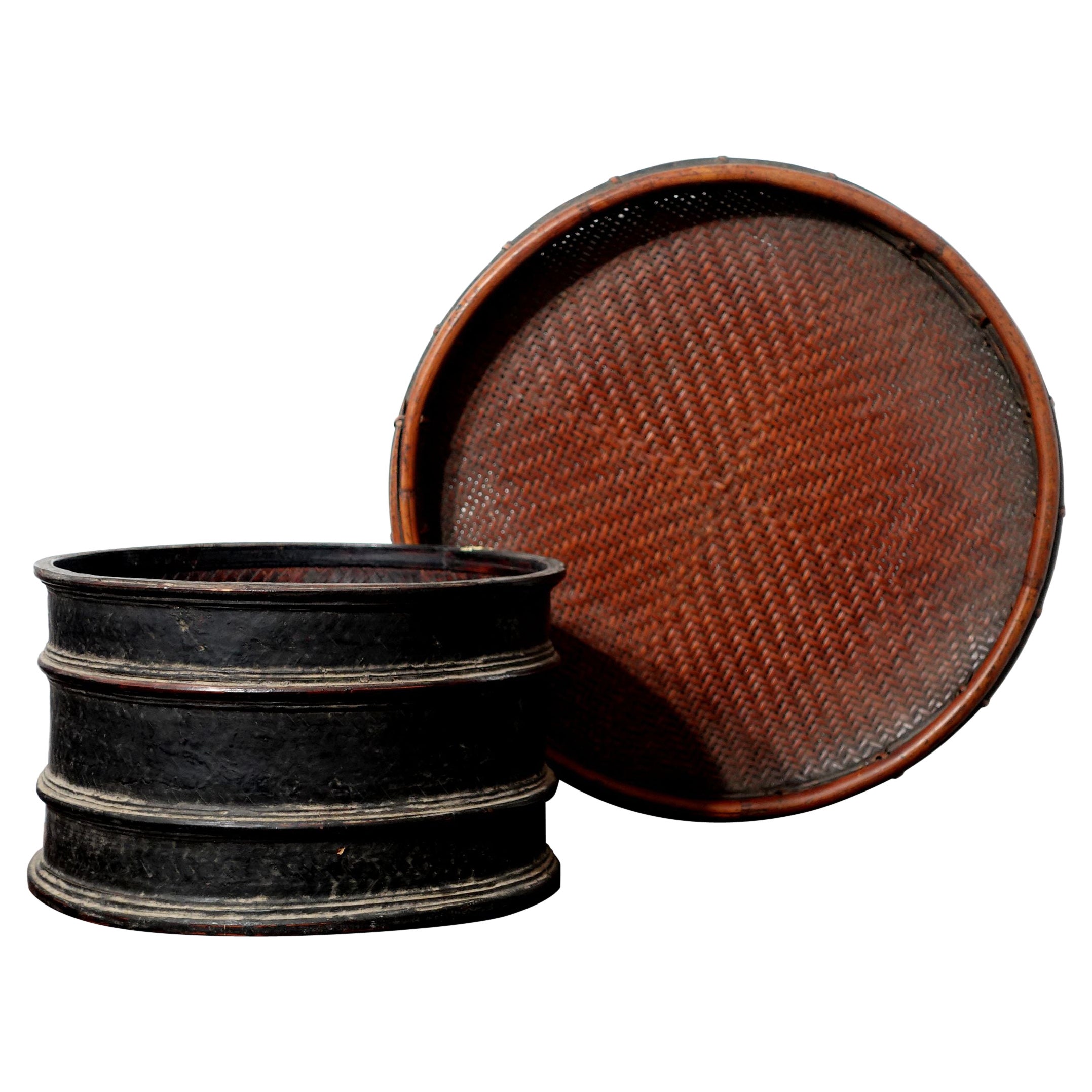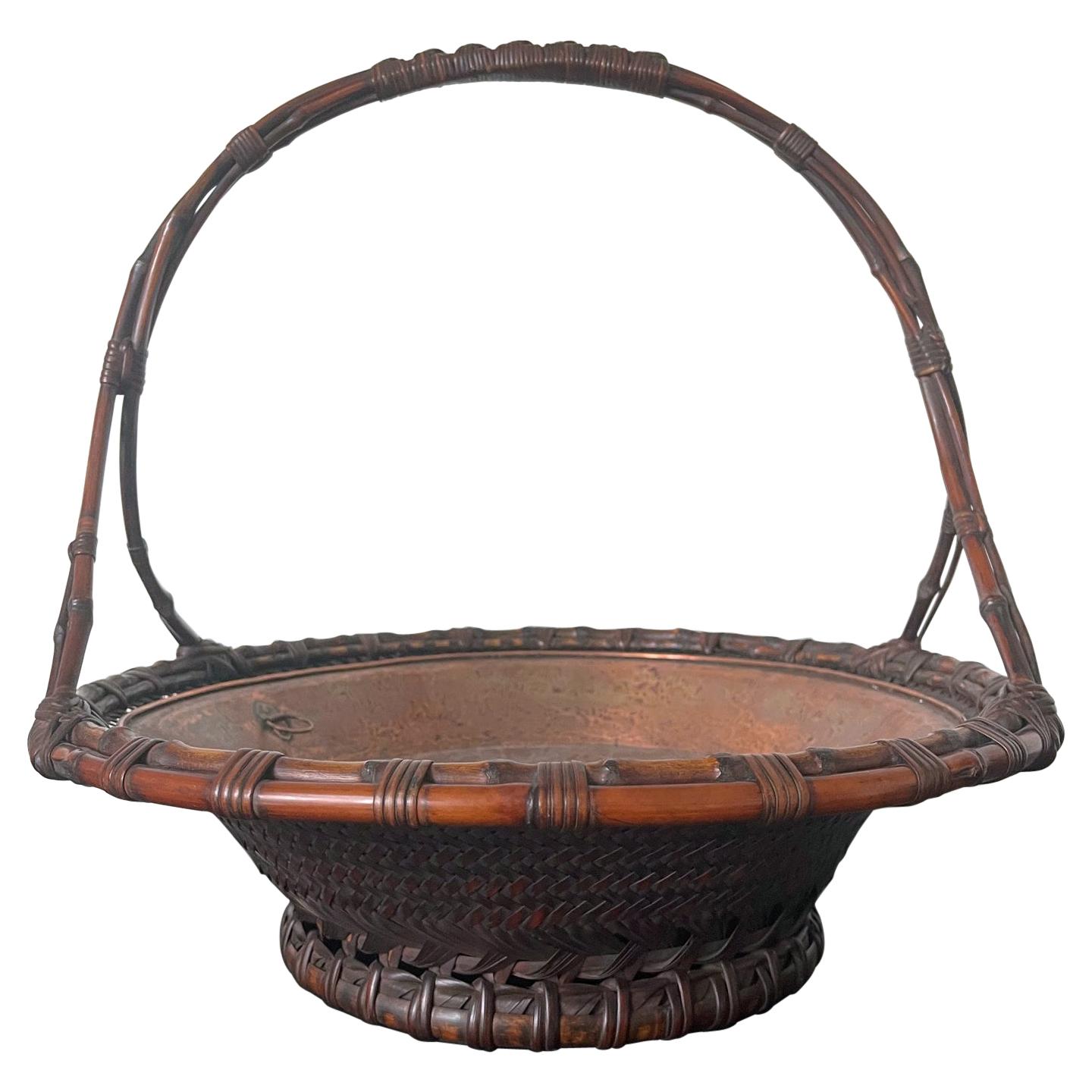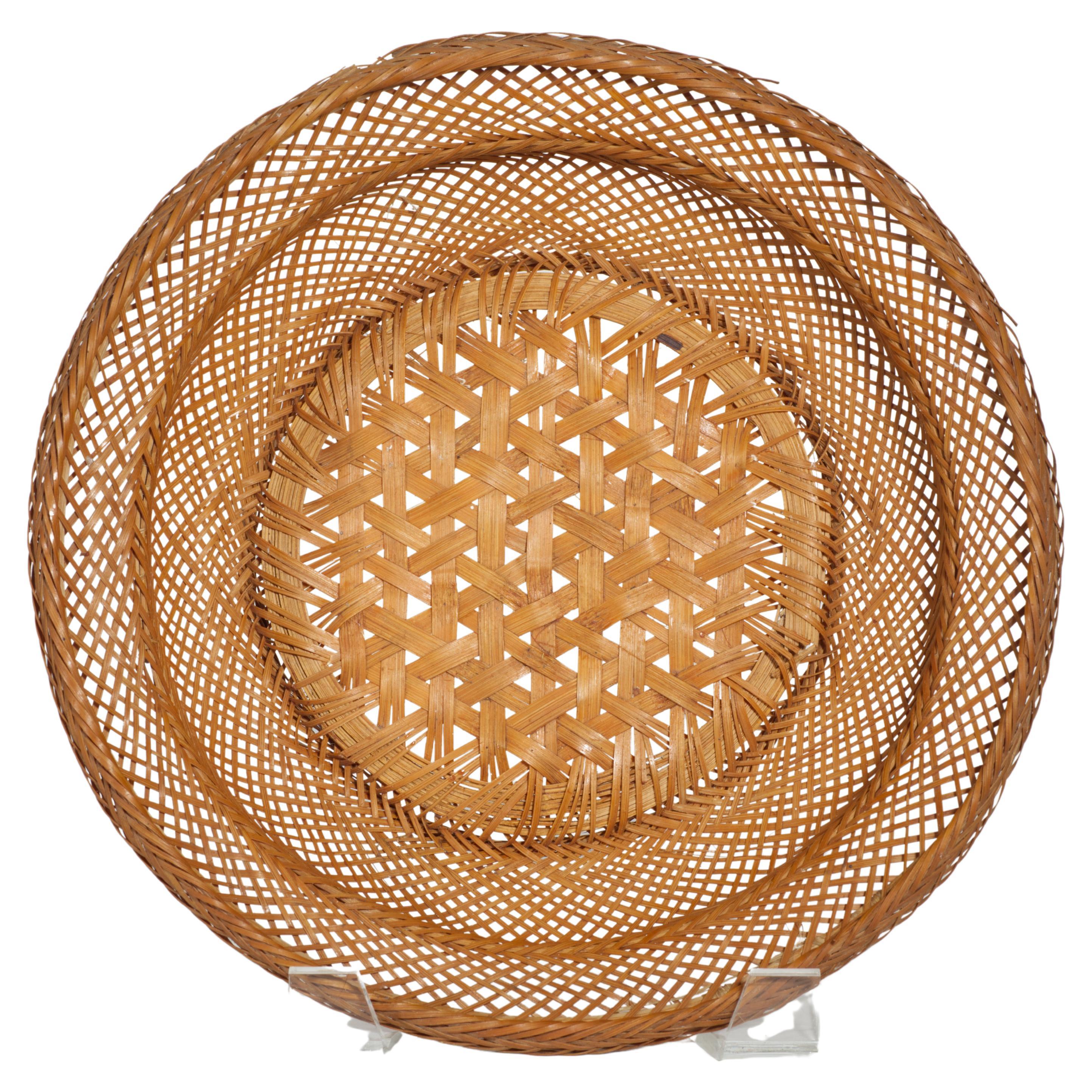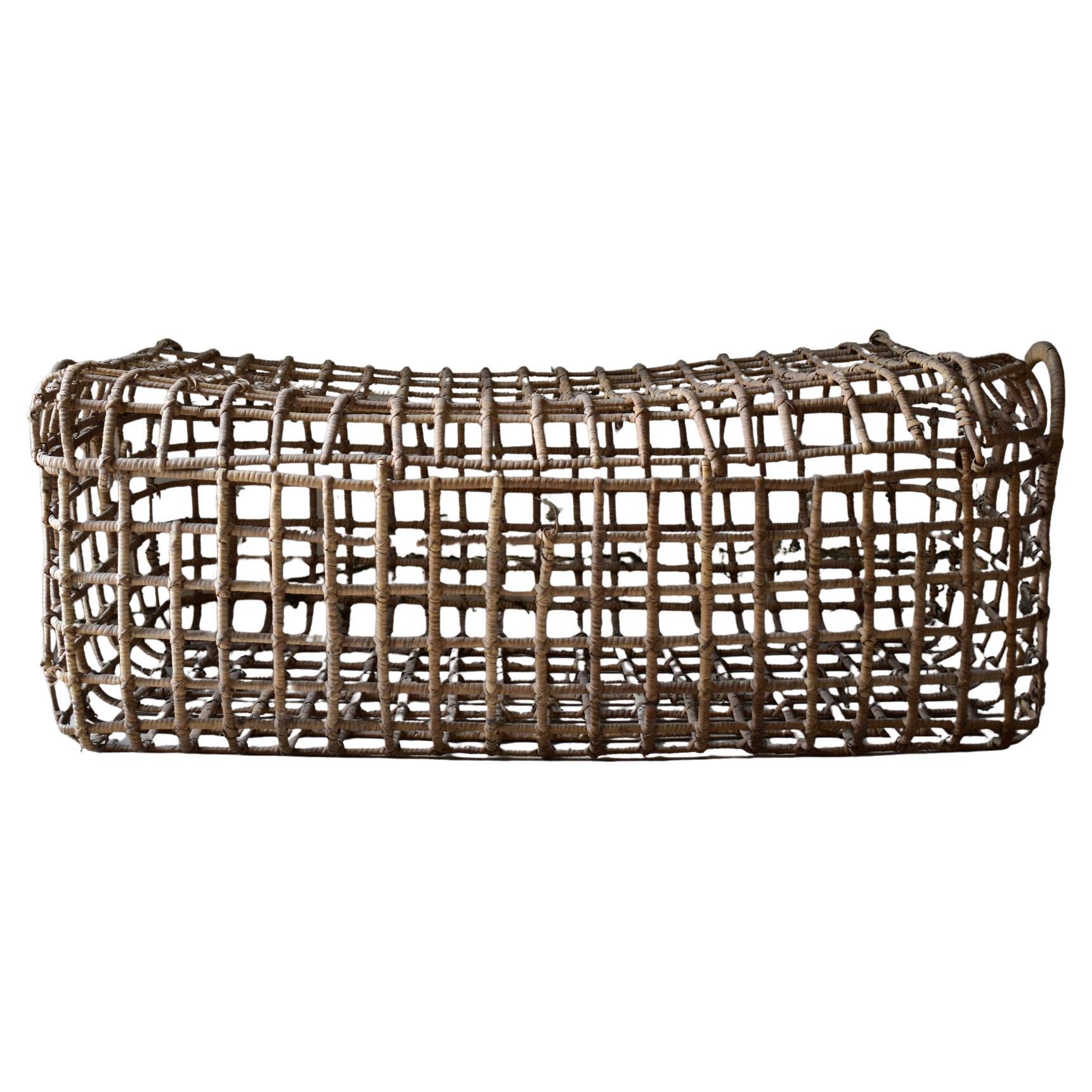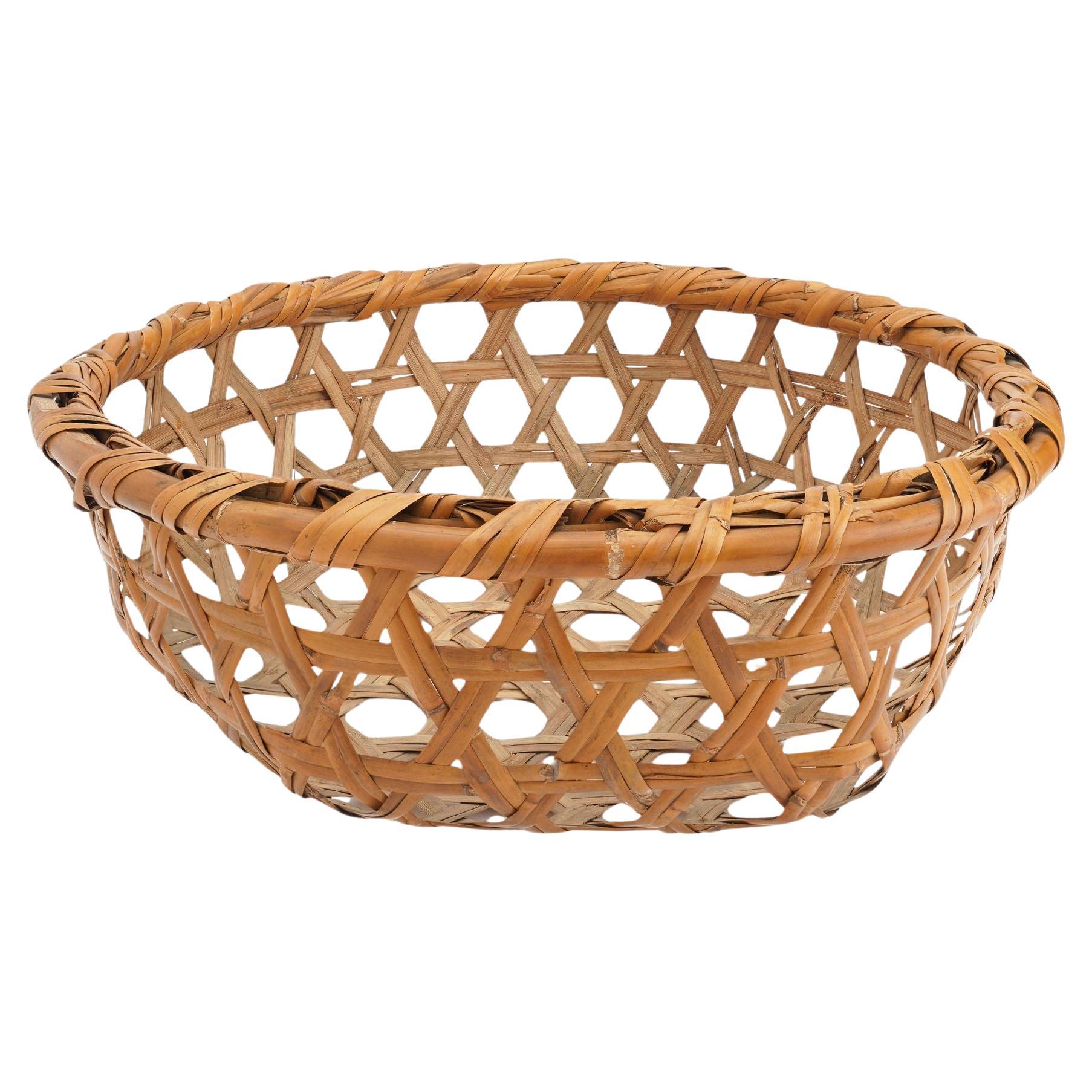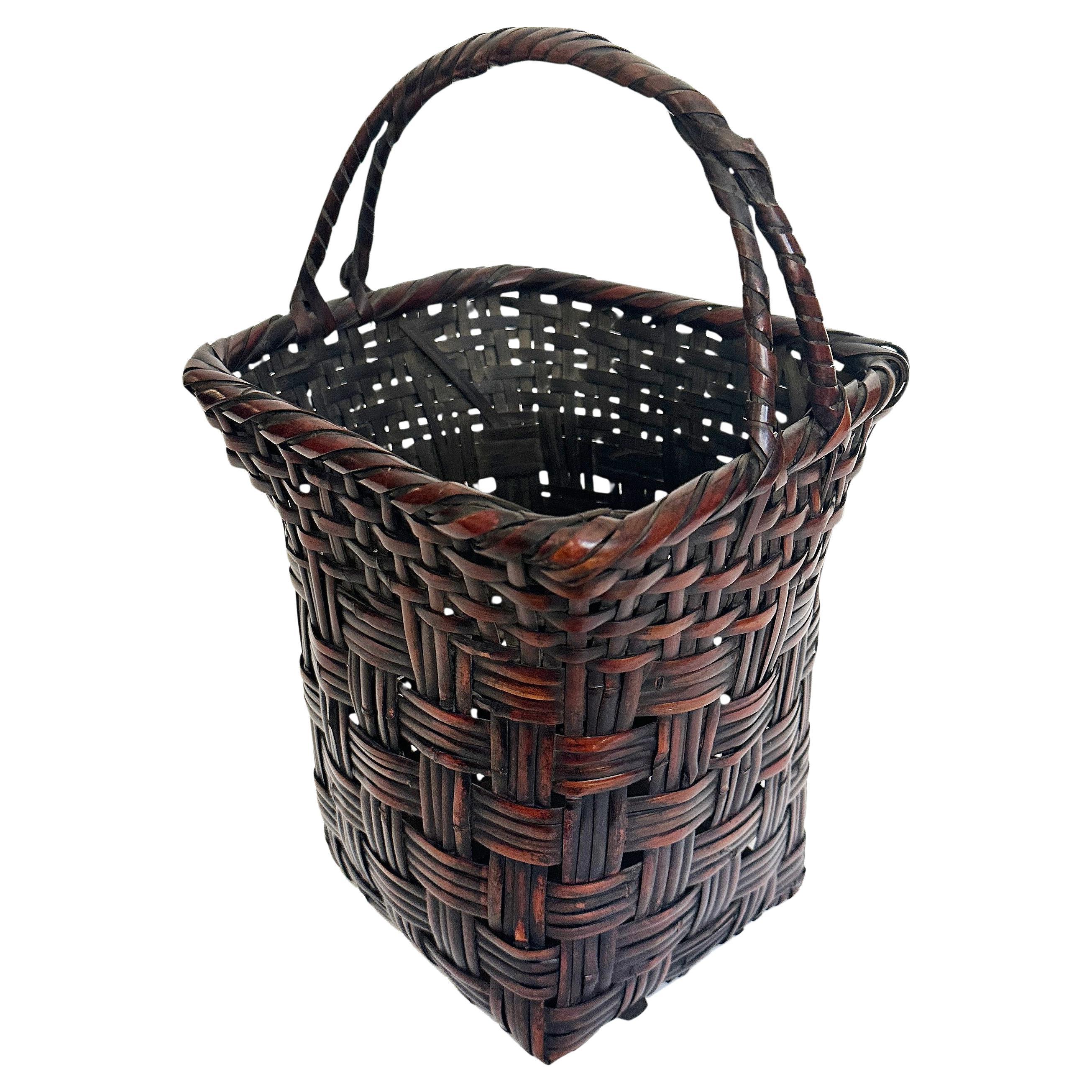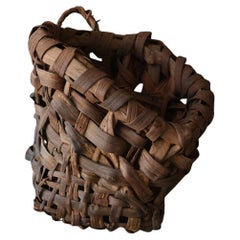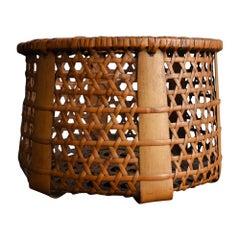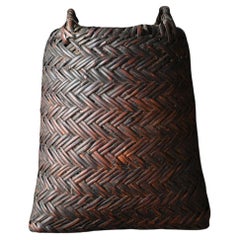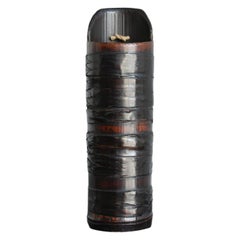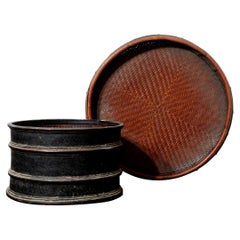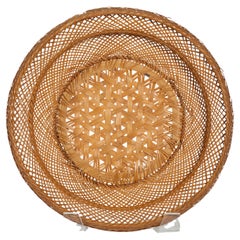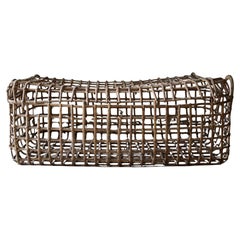Items Similar to Basket Woven from Japanese Bamboo / Wabi-Sabi Bamboo Object
Want more images or videos?
Request additional images or videos from the seller
1 of 9
Basket Woven from Japanese Bamboo / Wabi-Sabi Bamboo Object
$350
£267.37
€307.20
CA$500.42
A$551.35
CHF 285.41
MX$6,638.42
NOK 3,614.02
SEK 3,395.14
DKK 2,293.65
About the Item
It is an old Japanese basket.
It seems that it was used to dry something.
A charming object with a wabisabi atmosphere.
The shadows are very nice when you lean against the wall or hang it for display.
This item is a basket with a good atmosphere that is difficult to find even in Japan.
About the Seller
5.0
Platinum Seller
Premium sellers with a 4.7+ rating and 24-hour response times
Established in 2015
1stDibs seller since 2020
1,649 sales on 1stDibs
Typical response time: 5 hours
- ShippingRetrieving quote...Shipping from: Taito-ku, Japan
- Return Policy
Authenticity Guarantee
In the unlikely event there’s an issue with an item’s authenticity, contact us within 1 year for a full refund. DetailsMoney-Back Guarantee
If your item is not as described, is damaged in transit, or does not arrive, contact us within 7 days for a full refund. Details24-Hour Cancellation
You have a 24-hour grace period in which to reconsider your purchase, with no questions asked.Vetted Professional Sellers
Our world-class sellers must adhere to strict standards for service and quality, maintaining the integrity of our listings.Price-Match Guarantee
If you find that a seller listed the same item for a lower price elsewhere, we’ll match it.Trusted Global Delivery
Our best-in-class carrier network provides specialized shipping options worldwide, including custom delivery.More From This Seller
View AllAntique Japanese woven wall hanging basket/20th century/Wabi-sabi vase
Located in Sammu-shi, Chiba
This is a rustic woven basket made of walnut bark, made in Japan around the 20th century.
In Japan, tools made of natural materials have been used since ancient times as baskets for ...
Category
20th Century Japanese Taisho Decorative Art
Materials
Wood
Old Japanese bamboo woven flower vase / Japanese-style object / 20th century
Located in Sammu-shi, Chiba
This antique bamboo vase reflects the traditional beauty of Japan.
With a diameter of 23cm, a height of 15.4cm, and a weight of just 0.5kg, it's easy to handle and will subtly add co...
Category
20th Century Japanese Taisho Vases
Materials
Bamboo
Japanese antique bamboo woven basket/wall hanging vase/1868-1920/Mingei
Located in Sammu-shi, Chiba
This is a woven bamboo basket made in Japan from the Meiji to Taisho periods (1868-1920).
I don't know if the baskets actually used by farmers were repurposed as flower vases, or if ...
Category
Early 20th Century Japanese Meiji Decorative Art
Materials
Bamboo
Antique Vase Made of Japanese Bamboo and Bark /Wall-Mounted Flower Vase
Located in Sammu-shi, Chiba
If you want something special, we recommend purchasing items selected by Brood.
We sell carefully selected old Japanese items.
I've seen tens of thousands of items so far.
Based on that experience, only selected items are posted here.
We are able to do this because of our long experience.
There may be items on the 1stdibs site that look and feel the same, but the items selected by Brood are unique.
This is an old Japanese vase...
Category
Antique Late 19th Century Japanese Meiji Decorative Art
Materials
Bamboo
Old Japanese bamboo woven tray/20th century/Hand-woven tray/MINGEI
Located in Sammu-shi, Chiba
This is an old bamboo tray made in Japan around the 20th century. Japan has had a deep connection with bamboo for centuries, using bamboo products widely in daily life as well as in ...
Category
20th Century Japanese Taisho Barware
Materials
Bamboo
Antique wooden bucket of Japanese lacquer craftsman/20th century/planter
Located in Sammu-shi, Chiba
This is a wooden bucket used by Japanese lacquerware craftsmen to store lacquer.
It is believed to have been used from the Meiji period to the first half of the Showa era (1868-1940)...
Category
Antique Late 19th Century Japanese Meiji Lacquer
Materials
Cedar, Lacquer
You May Also Like
Antique Japanese Bamboo Strip Woven Tray and Starks
Located in Norton, MA
An absolutely beautiful Japan, 19th/early 20th century, a large round tray bordered with three bamboo starks; a measuring barrel in bamboo stalk frame, black-lacquered exterior.
T...
Category
Early 20th Century Japanese Decorative Baskets
Materials
Bamboo
Large Japanese Woven Bamboo Morikago Basket by Maeda Chikubosai I
By Maeda Chikubosai
Located in Atlanta, GA
A large and impressive Japanese basket in the form of a morikago by Maeda Chikubosai I (1872-1950) circa first half of the 20th century. Chikubosai I was from the Kansai Region and active in Sakai, Osaka prefecture. He was instructed by Wada Waichisai I, (1851-1901).
Morikago is a shallow open basket with handle. It was traditionally used to display fruits, sometimes flowers, during Sencha tea ceremony. In contrast to Chanoyu, Sencha ceremony uses loose green tea leaves instead of tea powder. The placement of loose fruits in the basket meant that the pattern of the bottom, which is often elaborate, was meant to be visible.
This morikago was beautifully constructed with bent bamboo frame and twill plaits for the body. The bottom of the basket features a double diamond pattern achieved with a variation of plover plait. The bifurcated handles was bundle-plated with a rather free spirit approach. They show a poetic suggestion of movement, as if the bamboos were still swaying in the wind. The basket has a copper insert that fits perfectly and it is quite possibly the original. The basket is signed on the base "Chikubosai". The style of the signature shows that it was made by Maeda Chikubosai I.
For another Morikago basket by Maeda Chikubosai I, see page 79 of "Masters of Bamboo" by Rinne.
For the study of the signature of Chikubosai I "Baskets Master Pieces of Japanese Bamboo Art...
Category
Early 20th Century Japanese Japonisme Decorative Baskets
Materials
Copper
Japanese Woven Bamboo Morikago Basket Suruga Sensuji Style, Vintage
Located in Clifton Springs, NY
Vintage woven Morikago basket features shallow open basket shape with wide rim. The wider bamboo strips that form the complex pattern on the bottom of the basket and divide into 4 th...
Category
Mid-20th Century Japanese Japonisme Decorative Baskets
Materials
Bamboo
$260 Sale Price
20% Off
Italian Handwoven Bamboo Basket, 1970's
Located in Miami, FL
A striking vintage Italian basket from the 1970s, meticulously handwoven from bamboo. Its sculptural, open-grid design highlights the artisanal craftsmanship and utilitarian elegance...
Category
Vintage 1970s Italian Decorative Baskets
Materials
Bamboo
Vintage Japanese hexagonal weave bamboo basket
Located in Kenilworth, IL
Vintage split bamboo hexagonal weave market basket. The split bamboo is framed by a circular shaped bamboo cane lashed with split bamboo to the basket weave.
Japan, 20th century.
Category
20th Century Japanese Decorative Baskets
Materials
Bamboo
Ikebana Basket, Bamboo, Early 20th Century, Japanese
Located in Point Richmond, CA
This ikebana basket features two weave patterns with a twisted handle in a square shape. It has a deep brown color with a slight contrast to highlight the weaving. It is constructed ...
Category
Early 20th Century Japanese Meiji Decorative Baskets
Materials
Bamboo
More Ways To Browse
Japanese Bamboo
Japanese Antique Bowls
Antique Japanese Basket
Japanese Bamboo Furniture
Wabi Sabi Object
Wabi Basket
Antique Japanese Woven Baskets
Black Lacquer Basket
Large Wicker Basket
Chinese Rattan Basket
Used Picnic Baskets
Wood Basket With Handle
Woven Indian Baskets
Antique Baskets With Lids
Antique Waste Baskets
French Country Basket
Antique Grain Measure
Antique Wire Baskets
